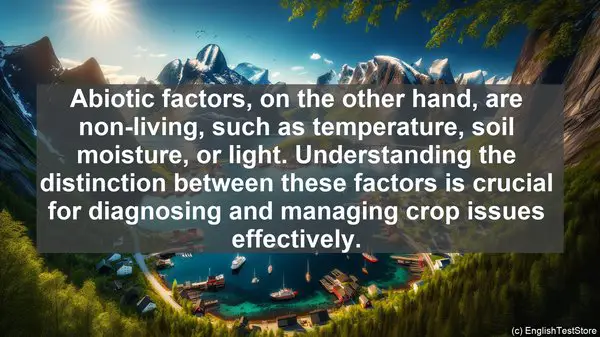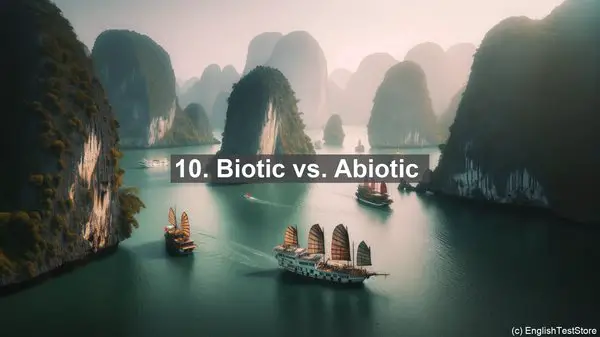Introduction: The Importance of Precise Terminology
Welcome to today’s lesson on the top 10 commonly confused words in crop science. As students, researchers, or professionals in this field, using precise terminology is essential. It ensures that our ideas are accurately conveyed and understood, preventing any potential misunderstandings or errors in our work.
1. Cultivar vs. Variety
The terms ‘cultivar’ and ‘variety’ are often used interchangeably, but they have distinct meanings. A cultivar refers to a cultivated variety that has been intentionally bred for specific traits, such as disease resistance or higher yield. On the other hand, a variety can occur naturally or through human selection. Understanding this difference is crucial when discussing plant breeding or selecting suitable crops for specific environments.
2. Fertilizer vs. Soil Amendment
While both fertilizers and soil amendments are used to improve soil fertility, they serve different purposes. Fertilizers provide essential nutrients to plants, promoting growth and development. Soil amendments, on the other hand, enhance the physical or chemical properties of the soil, such as its structure or pH level. Knowing when to use each can greatly impact crop productivity.
3. Hybrid vs. Genetically Modified Organism (GMO)
Hybrids and GMOs are often discussed in the context of crop improvement. A hybrid is the result of crossbreeding two different but closely related plant varieties, combining their desirable traits. GMOs, on the other hand, involve the insertion of specific genes into a plant’s genome to confer desired characteristics. Understanding the distinction between these two methods is essential when considering the potential benefits and concerns associated with each.

4. Perennial vs. Annual
Perennial and annual are terms used to describe the life cycle of plants. Perennials live for multiple years, often producing flowers and fruits each season. Annuals, on the other hand, complete their life cycle within a single year. Recognizing whether a plant is perennial or annual is crucial for planning crop rotations or understanding its growth patterns.
5. Pesticide vs. Herbicide
Pesticide is a broad term that encompasses various substances used to control pests, including insects, diseases, and weeds. Herbicides, specifically, target and control weeds. While all herbicides are pesticides, not all pesticides are herbicides. This differentiation is important when discussing pest management strategies or potential environmental impacts.
6. Germination vs. Emergence
When discussing the early stages of plant growth, the terms ‘germination’ and ’emergence’ are often used. Germination refers to the process where a seed begins to sprout and develop into a seedling. Emergence, on the other hand, is when the seedling breaks through the soil surface. Understanding these terms is crucial when monitoring crop establishment or assessing stand uniformity.
7. Tillage vs. No-Till
Tillage and no-till are contrasting approaches to soil management. Tillage involves the mechanical manipulation of the soil, such as plowing or disking. No-till, as the name suggests, avoids such disturbance, leaving the soil undisturbed. Both methods have their advantages and considerations, such as erosion control or organic matter preservation.

8. Macronutrient vs. Micronutrient
Plants require various nutrients for their growth and development. Macronutrients, such as nitrogen, phosphorus, and potassium, are needed in larger quantities. Micronutrients, on the other hand, are required in smaller amounts but are equally essential. Understanding the role and significance of each nutrient group is crucial for diagnosing and correcting nutrient deficiencies.
9. Photosynthesis vs. Respiration
Photosynthesis and respiration are fundamental processes in plant biology. Photosynthesis is the process where plants convert light energy into chemical energy, producing oxygen as a byproduct. Respiration, on the other hand, involves the breakdown of stored energy, releasing carbon dioxide. Recognizing the differences between these processes is essential when studying plant metabolism or understanding their interactions with the environment.
10. Biotic vs. Abiotic
In the context of crop science, factors influencing plant growth and productivity can be classified as biotic or abiotic. Biotic factors include living organisms, such as pests or beneficial microbes. Abiotic factors, on the other hand, are non-living, such as temperature, soil moisture, or light. Understanding the distinction between these factors is crucial for diagnosing and managing crop issues effectively.
